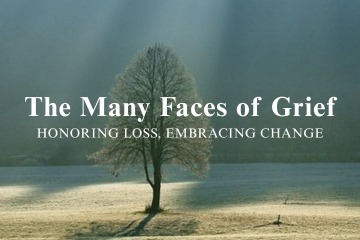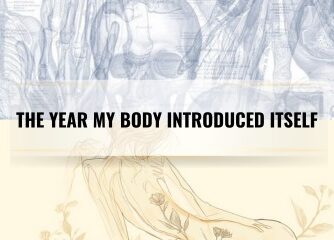What is Grief, really?
There’s a quiet heartbreak that settles into the body when we lose something—whether it’s a person, a place, or even a version of ourselves. What many don’t realize is that all loss deserves to be grieved. Grief isn’t reserved for death. It shows up in identity shifts, relationship endings, career changes, big moves, or even moments of deep personal transformation.
Any time we lose something meaningful; we are no longer the same person we were before. To fully embrace the new, we must grieve the old.
Back in 1969, Swiss American psychiatrist Elisabeth Kübler-Ross introduced what she called “the five stages of death”: denial, anger, bargaining, depression, and acceptance. These have become widely known as the five stages of grief—and while they’ve helped many, I’ve come to understand they don’t tell the full story.
Why the Five Stages Weren’t Enough
Through years of personal experience, therapy, and research, I’ve learned that grief isn’t linear. It doesn’t follow a clean path from denial to acceptance. Some people move through the stages in a spiral, some stay stuck for a while, and others revisit emotions they thought were already “completed.” There’s no one right way to grieve.
In 2015, my husband and I met a couple, introduced by a mutual friend, who lived in San Diego who would later move to Costa Rica. They specialized in personal transformation and trauma resolution. Through mentoring with them, I was introduced to a tool developed by one of them—a process born from supporting a friend through profound grief.
He noticed something missing in traditional models, and created a more embodied, nonlinear guide. I used it myself and found it powerful—especially because it works not only for death, but for any form of loss, including identities we’ve outgrown.
A Body-Based Map of Grief
Grief doesn’t just live in the mind. It’s held in the body—in our breath, our posture, our nervous system. That’s why I found this model so resonant. It doesn’t just describe emotional stages—it invites your body to process the grief too.
With permission, I’m sharing this method, developed by B. Rode of The Rode Institute.
The 6 Stages of Grief
By B. Rode – The Rode Institute
- Shock & Denial
At first, the loss may not feel real. A part of you might reject the truth entirely—this is your mind protecting you from the emotional tsunami building beneath the surface. You might distract yourself, go numb, or feel totally disconnected. That’s okay. The feelings will come.
You might say:
- “It just doesn’t seem real.”
- “No, I’m good…”
- “I can’t believe this happened.”
- “How could this be?”
Embodiment Prompt:
Act this out fully. Let your body speak the disbelief. Freeze, fidget, go blank. Give yourself permission not to feel—yet.
- Pain & Guilt
Eventually, the walls come down and the grief rises. The waves hit. Let yourself fall apart. This is how we heal.
If your relationship to the loss was complicated, guilt may surface. Regret. Self-blame. Be gentle here. You’re human.
You might say:
- “Why me?”
- “I can’t go on.”
- “It feels like my heart is being ripped out.”
- “I should’ve been nicer…”
Embodiment Prompt:
Cry. Yell. Collapse. Let the pain move through you. Don’t push it down—release it.
- Anger & Bargaining
Pain often gives way to anger—at yourself, at others, at the universe. Let it out safely. Scream, stomp, write letters you’ll never send.
You may try to negotiate with life, as if you could undo what’s happened. That’s okay. Let that impulse move through you, too.
You might say:
- “You idiot!!!”
- “What have I done?”
- “I’ll do anything to get them back.”
- “I just want things to go back to normal.”
Embodiment Prompt:
Throw a fit. Pound a pillow. Scream into the void. Let your body rage without judgment.
- Integrated Sadness & Reflection
After the storm, there is stillness. The sadness here is different—it’s integrated. You’ve released some of the charge, and now you can reflect.
You feel the absence, the ache. You begin to understand what you’ve lost—and what it meant to you.
You might say:
- “I just want to be alone.”
- “This hurts so much…”
- “I really miss them.”
- “They used to be the one who carried in the groceries…”
Embodiment Prompt:
Sit with it. Journal. Stare at the sky. Let the sadness wash over you. Don’t rush to fix it.
- The Turning Point & Rebuilding
One day, you notice yourself functioning again. You smile. You remember without breaking down. Life slowly starts to rebuild itself—around the loss, not without it.
This is the beginning of your new normal.
You might say:
- “I miss them, but I’m okay.”
- “I think I’m ready to go out again.”
- “I’m really getting the hang of this.”
Embodiment Prompt:
Stretch. Breathe. Move gently. Celebrate the small returns of lightness.
- Acceptance & Full Surrender
You’re no longer fighting reality. Acceptance doesn’t mean forgetting—it means integrating. You carry the loss with grace, without letting it define you.
You walk forward. Changed. Whole.
You might say:
- “It’s better to have loved and lost than to never have loved at all.”
- “I carry them with me.”
- “I’m at peace.”
Embodiment Prompt:
Stand tall. Ground yourself. Thank the old. Embrace the new.
Grief Beyond Death – Everyday Moments of Loss
One of the most surprising lessons I’ve learned is how often grief arises in places that don’t look like loss. But grief belongs to more than just death.
It might show up when you:
- Retire from a lifelong career
- Leave a faith community
- Come out to yourself or others
- Let go of a dream that once defined you
Even joyful changes can stir grief.
Examples:
- Getting married – grieving the end of singlehood and shifting identity.
- Birthdays – saying goodbye to who you were at a younger age.
- Becoming a parent – mourning the freedom and former identity of life before caregiving.
Any big life transition can carry both joy and grief. And both deserve space.
You Are Not Alone
If you’re navigating grief, please know you don’t have to do it alone. A qualified therapist or grief counselor can be a powerful support. So can a safe community, ritual, and spiritual tools.
If you’re in the thick of it right now, know this: I see you. I’ve been there. And if it feels right, I’d be honored to witness your story.
Grief has many faces. And every one of them is worthy of breath, attention, and grace.
Theresa Martinez-Shapiro
Reiki Master, Oracle Guide, and Founder of Flexible Being
Website: www.flexiblebeing.com
Socials:
Facebook: @flexiblebeingonline
Instagram: @theresamartinezshapiro
Instagram: @flexiblebeing







